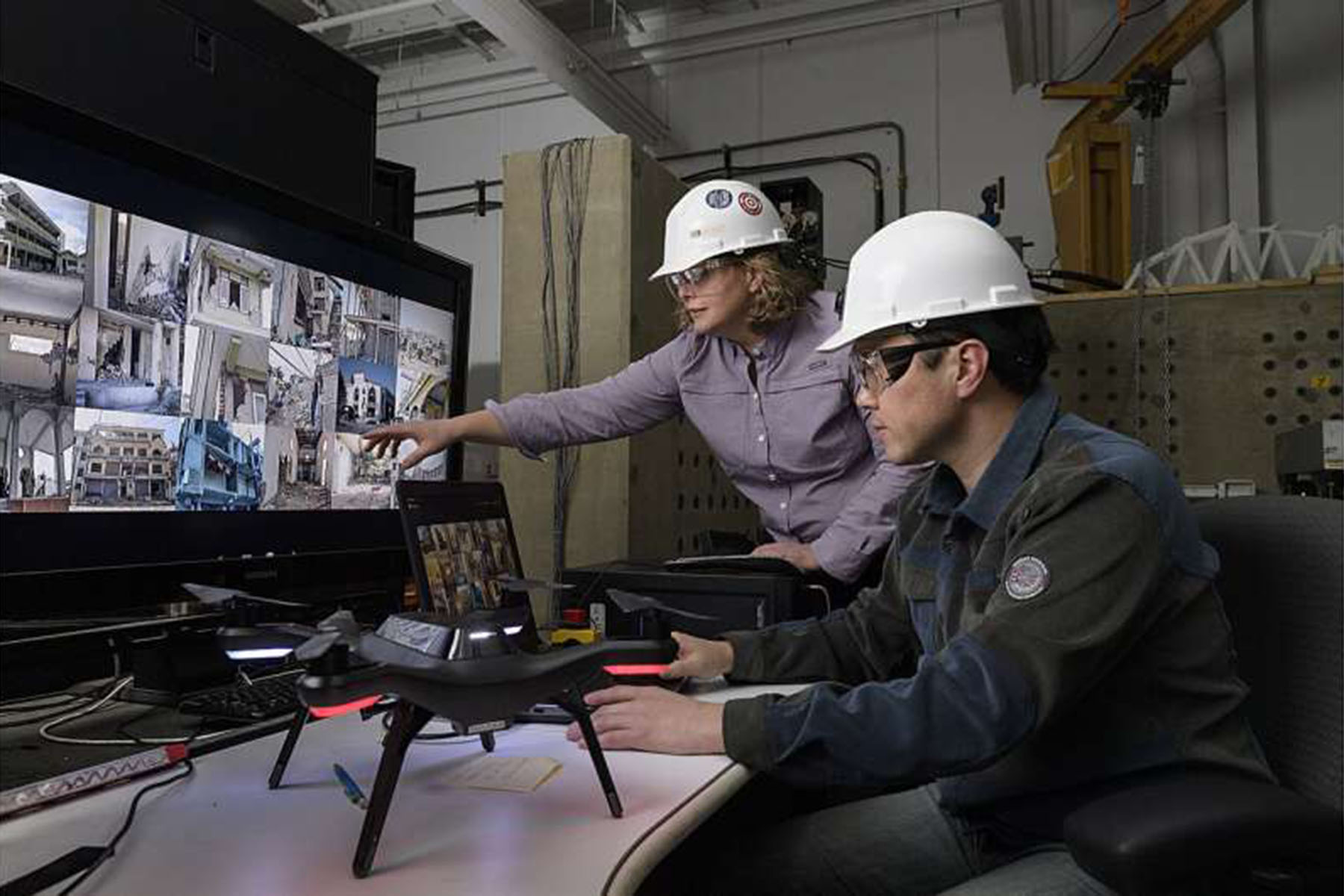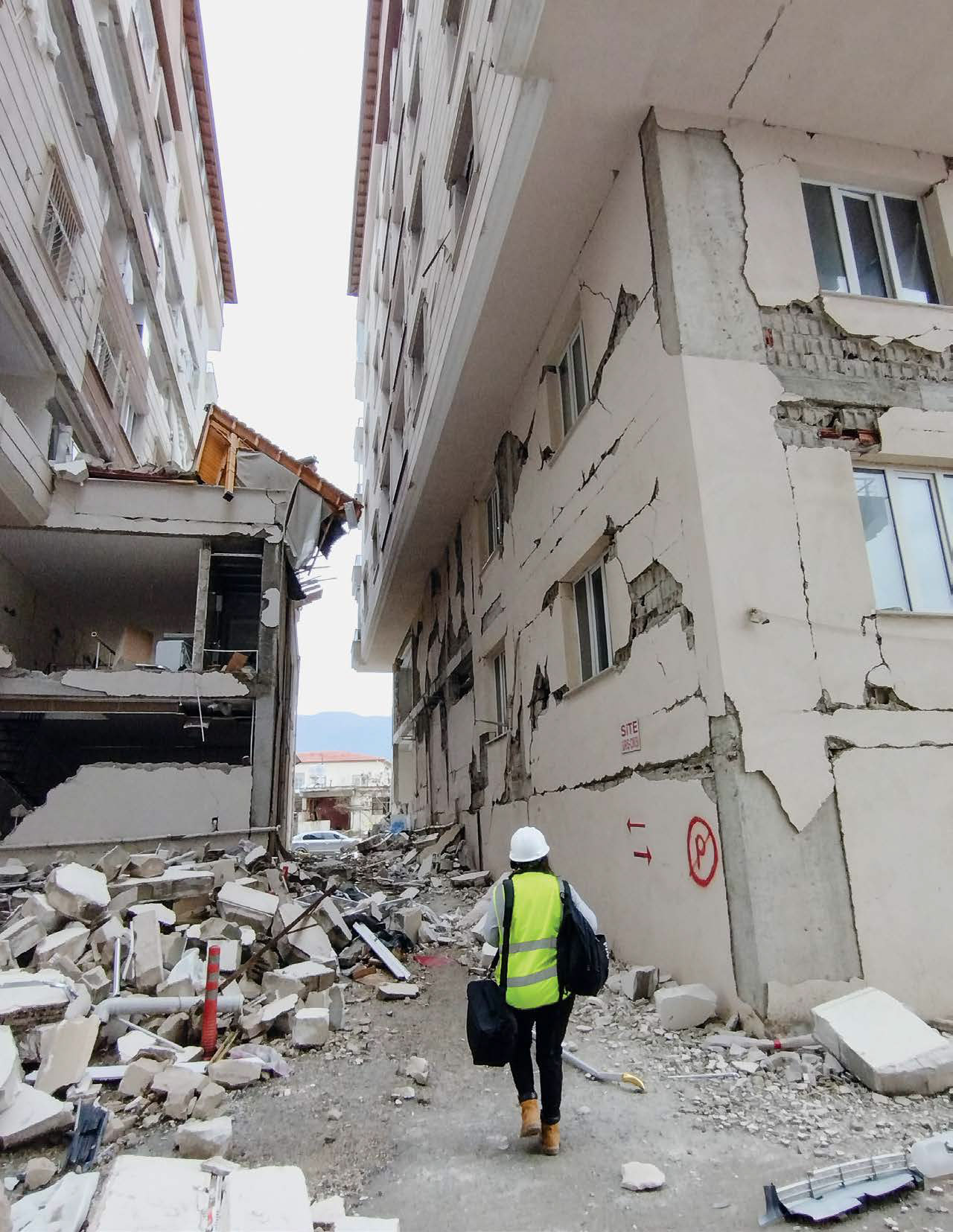New NSF center applies artificial intelligence to structural engineering

“My team at Purdue has been successful in applying AI in new ways to realize more sustainable and resilient physical infrastructure,” said Shirley Dyke, professor of mechanical engineering and the Lyles School of Civil and Construction Engineering. Dyke is also the director of the Resilient Extra Terrestrial Habitats Institute (RETHi) and the director of the Intelligent Infrastructure Systems Lab (IISL).
So far, they’ve developed a platform Automated Reconnaissance Image Organizer (ARIO) tool that rapidly sorts the large volumes of images collected by reconnaissance teams after a natural disaster. This tool utilizes machine learning to automatically organize thousands of images in seconds, and creates individual reports containing hundreds of photos for each building photographed.
To further this work, Dyke’s team is working with the NSF to establish the Center for Visual Structural Expertise for Resilience (C-ViSER). This is an Industry-University Cooperative Research Center (IUCRC), a partnership to maximize the relationships between industry, government, and academic researchers.
The new center is comprised of two sites, Purdue University and the University of Houston. There will be a workshop in Houston on October 21-22 that will disseminate the goals of the center and foster these new partnerships between industry and academia. At the workshop, the center’s leadership and participants from industry will discuss the industry need for foundational AI systems that are aligned with structural engineering practices and have maximum impact.

Lissette Iturburu, a graduate student who works with Dyke, said she hopes this center will allow them to empower structural engineers by bringing AI into the practice. “So far, we have been working to minimize the consequences of extreme events on our buildings to facilitate safer communities. With appropriate use of AI, we can look across hundreds of designs and structural drawings to identify and isolate where performance gaps occur in knowledge. We can also do further research on dealing with community recovery and predicting vulnerabilities in communities before an event occurs.”
Dyke said she hopes this center fosters deeper interactions with industry. “We want to understand what challenges industry is having in using AI and find solutions that will enable them to strategically and responsibly use AI to be more productive. Participating students will also have the chance to work side-by-side with practicing engineers and build lasting relationships.”
Purdue collaborators also include Thomas Hacker, professor of computer & information technology and Julio Ramirez, Karl H. Kettelhut Professor of Civil Engineering and NHERI-NCO Center Director.
This group has worked with centers such as the Mid-America Earthquake Center, Network for Earthquake Engineering Simulation (NEES) Network, Natural Hazard Engineering Research Infrastructure (NHERI) Network, and virtual communities like Multi Hazard Engineering Collaboratory and Hybrid Simulation (MECHS) and NASA on their research in the past.
“Working with the ARIO team from Purdue University has been rewarding,” said Dr. Insung Kim from Degenkolb Engineers, one of the team’s past collaborators. “The team is knowledgeable and supportive, and they have developed a powerful tool. They helped us develop a database of about 95,000 earthquake reconnaissance photos collected by the Degenkolb engineer team since the 1960s. Our engineers can now rapidly find the images they want to use. The team listened to our needs and helped us create a tailored tool.”
This physical implementation of machine learning aligns with the university’s IPAI Center, intended to bring interdisciplinary thinking and problem-solving to solve issues at the intersection of AI and the physical world, and the Purdue Computes initiative, which fosters excellence in computing, artificial intelligence, semiconductors, and quantum science.
Interested in attending the October 2024 workshop on AI in structural engineering? Please email Shirley Dyke: sdyke@purdue.edu
Source: Shirley Dyke, sdyke@purdue.edu
Writer: Julia Davis, juliadavis@purdue.edu
